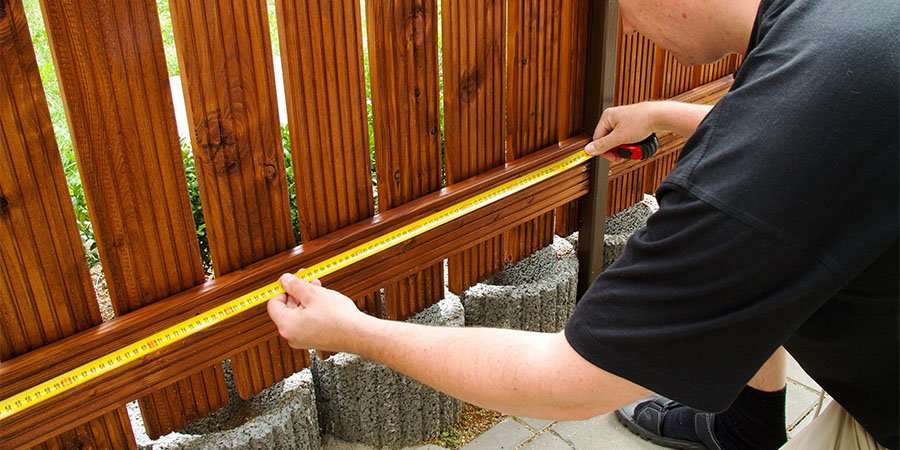Featured

Your fence is a vital component of your residential or commercial property, using curb, personal privacy, and protection charm. There are a number of methods you can execute to shield your fence and extend its life.
- Select the Right Material. The primary step in securing your fence from weather-related damages is to choose the best material for your climate. Some products are a lot more immune to the aspects than others.
Wood Fencings: While conventional wood fencings supply an all-natural, eye-catching appearance, they are especially at risk to water insect, rot, and damage infestation. Such as cedar or redwood if you choose wood, choose pressure-treated lumber or timber kinds that are extra immune to moisture. Plastic Fences: Vinyl is a low-maintenance alternative that withstands fading, breaking, and warping. It's likewise immune to rot and bugs, making it optimal for areas with high humidity or direct exposure to rainfall. Metal Fencings: Aluminum and functioned iron fences are resistant and long lasting to weathering. Nonetheless, they can rust if subjected to moisture for extended durations. Select a powder-coated or galvanized metal fence to reduce the threat of deterioration. Composite Fences: These are made from a blend of wood fibers and plastic, providing the very best of both worlds-- sturdiness and an all-natural appearance. Compound fences are immune to wetness, fading, and rotting, making them wonderful for climates with regular rainfall or snow. 2. Apply Protective Coatings. No matter the product, using a safety finish can aid safeguard your fencing from weather condition damages.

Wood Fencings: A good-quality tarnish or sealant can help protect your wood fencing from dampness, UV rays, and pests. These finishes create an obstacle that avoids water from permeating into the wood and causing rot. You must use a fresh layer of tarnish or sealer every pair of years, depending on your climate and the level of exposure to rain and sunshine. Plastic Fencings: Although plastic fencings are normally immune to weathering, they can still struggle with discoloration because of the sunlight's UV rays. You can utilize specific vinyl cleansers or UV protectants to preserve the shade and look of your fencing. Steel Fences: For steel fencings, think about applying a rust-resistant primer and a coat of paint created for outside use. Powder covering is one more superb option for metal fences, as it creates a long lasting, weather-resistant surface that resists rust and deterioration. 3. Regular Cleaning and Upkeep. Keeping your fencing on a regular basis is important to preventing damages from the elements. Dirt, leaves, and various other debris can develop on your fence, which can cause discoloration, mold and mildew, and mildew gradually.
Wooden Fencings: Tidy your wooden fence every 6 months with a moderate cleaning agent solution or a stress washing machine (on a low setting) to eliminate dust and gunk. Watch out for early indications of rot, specifically at the base of the fence messages where moisture tends to gather. Plastic Fencings: Vinyl fences are very easy to clean with soap and water. If you observe mold or mildew, use a mix of vinegar and water to gently scrub the impacted areas. Avoid extreme chemicals that can damage the surface area. Metal Fencings: Regularly tidy metal fences with a soft fabric or sponge to eliminate rust-causing particles. For wrought iron fences, think about using a rust-inhibiting product to prevent deterioration. 4. Correct Installment and Positioning. Correct installation of your fencing can go a long method in shielding it from weather-related damages. Guarantee that your fence is securely anchored and that messages are established deep enough right into the ground to avoid moving during heavy winds or tornados. If your fencing is subject to hefty winds, mounting bracing at bottom lines can supply extra support.
Furthermore, think about the positioning of your fencing. If feasible, plant hedges or trees tactically around your fencing to give some all-natural defense from harsh winds, intense sunlight, or driving rainfall. Nonetheless, be careful not to plant also close to the fencing, as roots can damage or shift articles in time.
- Address Tornado Damages Promptly. Tornados, especially those with high winds or hail storm, can trigger prompt damages to your fence. After a storm, inspect your fencing for damaged areas, leaning blog posts, or dropped particles. Attending to damages quickly can protect against additional concerns down the line. If you discover small damages, such as small fractures or loosened panels, repair them today to stop water from permeating in and triggering much more considerable damage.
- Winterize Your Fencing. Cold temperatures and ice can be specifically harming to wooden fences. To avoid this, make sure that the base of your fence articles is elevated and not resting in pooled water.
Final thought. Weather-related damages is an inevitable component of having a fence, but with the appropriate precautions and regular upkeep, you can considerably prolong the life of your fence. Choose resilient products fit for your environment, use protective coatings, tidy on a regular basis, and guarantee appropriate installation. With these actions, you can secure your fence from the components and keep its appearance and functionality for years to find.
Latest Posts
Check Out Outstanding Vehicle Maintenance Care from Montclare Auto Repair – Drive with Confidence
Published en
1 min read
Check Out Montclare Auto Repair’s Most Popular Services and Why Drivers Rely On Them
Published en
1 min read
Find Brake Repair & More: Complete Repair Options from Montclare Auto Repair
Published en
1 min read
More
Latest Posts
Check Out Outstanding Vehicle Maintenance Care from Montclare Auto Repair – Drive with Confidence
Published May 30, 25
1 min read
Check Out Montclare Auto Repair’s Most Popular Services and Why Drivers Rely On Them
Published May 25, 25
1 min read
Find Brake Repair & More: Complete Repair Options from Montclare Auto Repair
Published May 23, 25
1 min read